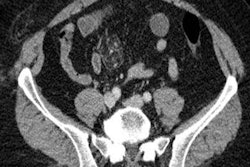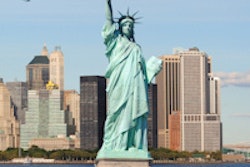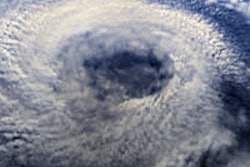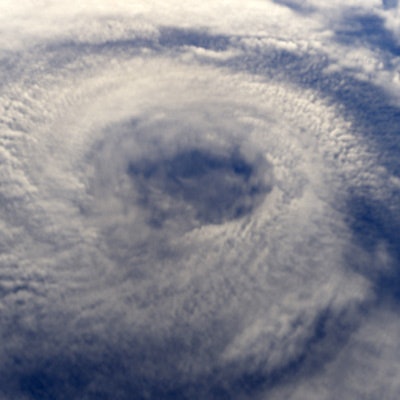
Hurricane Harvey hit the Texas coast on August 25, with winds as high as 130 miles per hour. Over the course of the storm, parts of Houston saw more than 40 inches of rainfall, the U.S. National Weather Service reported. The Harris County Flood Control District -- to which Houston belongs -- estimated that 70% of the county had been covered by at least 1.5 ft of water and 1 trillion gallons of water fell over the county over the course of the storm.
But rather than overwhelming radiologists and radiology staff on the ground in Houston, the crisis brought out their best, according to Dr. Marc Willis at Baylor College of Medicine. Willis is chief of Baylor's musculoskeletal imaging and intervention section and associate program director of its diagnostic radiology residency.
 Dr. Marc Willis from Baylor College of Medicine.
Dr. Marc Willis from Baylor College of Medicine."It's amazing to see the empathy an emergency brings out in people -- toward patients and toward their coworkers," Willis told AuntMinnie.com. "It was hard on our staff, from radiologists to technologists to clerks, to be away from home, because some were also personally affected by the storm. But as horrible as the crisis was, everyone pulled together. There was a tremendous amount of interprofessional collaboration and teamwork."
Ride out and recovery
Baylor itself went through the storm without much damage, although it did sustain some flooding. But its neighbor, Ben Taub General Hospital, which is part of Houston's county hospital system and to which Baylor supplies radiology residents, wasn't so lucky: The storm flooded some areas and damaged the hospital's kitchen, affecting its ability to provide food to patients and staff. The hospital fairly quickly had to divert any new patients to other local facilities, Willis said.
Baylor third-year resident Dr. Joshua Carlton was on call at Ben Taub on August 26, as the storm ramped up. Because parts of Houston had already begun to flood, he arrived at 11:00 a.m. for his 7:00 p.m. shift as part of the ride-out team, the hospital personnel assigned to staff the hospital during the storm's worst hours. As the night progressed, water from Brays Bayou continued to rise outside of the hospital, until it was just a few feet shy of the emergency room entrance.
"By that time, there was no access to the hospital except by boat," Carlton said. "Some water began to get in, and then a pipe broke inside and water started to accumulate in the basement, where the kitchen is."
Carlton and second-year resident Dr. Varshana Gurusamy ended up staying through Monday morning, again in part because the ride-out team couldn't get out of the hospital easily and the recovery team couldn't get in.
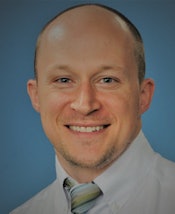 Baylor third-year resident Dr. Joshua Carlton.
Baylor third-year resident Dr. Joshua Carlton."We tried to take sleep shifts, but the call rooms were packed," Carlton said. "Radiology department personnel were sleeping in x-ray, ultrasound, CT rooms."
Carlton and Gurusamy kept in close touch with their attending physicians, specifically Dr. Ann Marie Marciel, PhD, who was reading cases next door at Baylor. They also received regular emails from their program director, Dr. Pedro Diaz-Marchan, updating them on the status of the floods, when to expect backup residents to arrive, and whether it was safe to try to leave.
"It was helpful to be constantly communicating," Carlton said. "And in part because of this communication, none of our staff met with accidents, either en route to the hospital or leaving it."
By the time Willis arrived as part of the recovery team the morning after the storm had passed, some staff had been on duty anywhere from 72 to 96 hours, he said. To make matters worse, recovery team personnel were struggling just to get to the hospital.
"The recovery team was having trouble getting in, so some of the ride-out team stayed even longer -- and many of them didn't even know the status of their own homes," he said. "I was talking to a few of the techs, telling them that I admired how they were handling the situation, and they told me, 'We knew when we went into this occupation that there could be sacrifice involved to take care of patients; we're just doing what we signed up for.' "
Conscientious preparation and clear communication played a huge part in handling Harvey, according to Willis.
"One thing we've discovered is that having a lot of redundancy in our IT systems is a crucial part of navigating a crisis," he said. "You can't predict where you'll lose power, so it's important to have extra resources. And our residents and attendings did a great job communicating during the storm."
Proactive preparation
MD Anderson Cancer Center established a command center early on to deal with the hurricane, days before it hit, according to Dr. Joseph Steele, division head of diagnostic imaging. The medical center predominately serves patients undergoing cancer treatment, many of whom bring family members along for support. During the storm, the facility had more than 500 patients onsite, as well as 200 of the patients' family members.
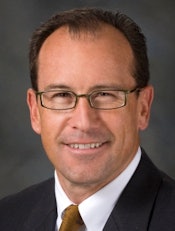 Dr. Joseph Steele from MD Anderson.
Dr. Joseph Steele from MD Anderson."We have an organized process for dealing with hurricanes, so we were relatively prepared," he told AuntMinnie.com. "It's during crises like these that you realize how interdependent we are in the hospital -- radiology depends on transportation and housekeeping, surgery depends on radiology. It shows that the cliché is really true: You're only as strong as your weakest link."
The hospital experienced some flooding in its lobby, but for the most part it remained dry, Steele said. In fact, since Tropical Storm Allison in 2001 and Hurricane Ike in 2008, the medical center has invested in barriers that can be raised to block water.
"Holcombe Boulevard, in front of MD Anderson, essentially became a river, but only small amounts of water got into the medical center because of the barriers," he said.
MD Anderson's radiology department consolidated its operations in the main hospital, and it worked with all of the clinical services to identify the sickest patients who needed imaging during the storm's duration. Then the team determined how many radiology staff members it would need and tried to get them onsite.
"We had a designated ride-out team as well as an on-call team," Steele said. "But given the size of the storm, we were worried about their relief. The roads could be impassible for days, limiting our recovery teams' access and essentially leaving them stranded. So we used a geolocator to identify the faculty who lived closest to the hospital and told them we might be calling them. And, in fact, we did have some radiologists who ended up coming in by walking through knee-deep water to relieve colleagues who had been onsite for days."
In addition, MD Anderson had a group of radiologists reading studies remotely, on home workstations. Luckily, the challenge of Harvey in Houston was predominately flooding and rain, rather than wind, so in many areas the power was not affected, Steele said.
"We had faculty who had some water in their homes but were reading images in their office upstairs," he told AuntMinnie.com.
The radiology staff's resilience during the crisis was truly impressive, Steele said.
"Many of our staff have been either directly affected by Harvey or their families were affected, but still we've got 85% to 90% back working now," he said. "We're proud of the fact that we managed to provide a safe environment for patients and their families and our staff."






